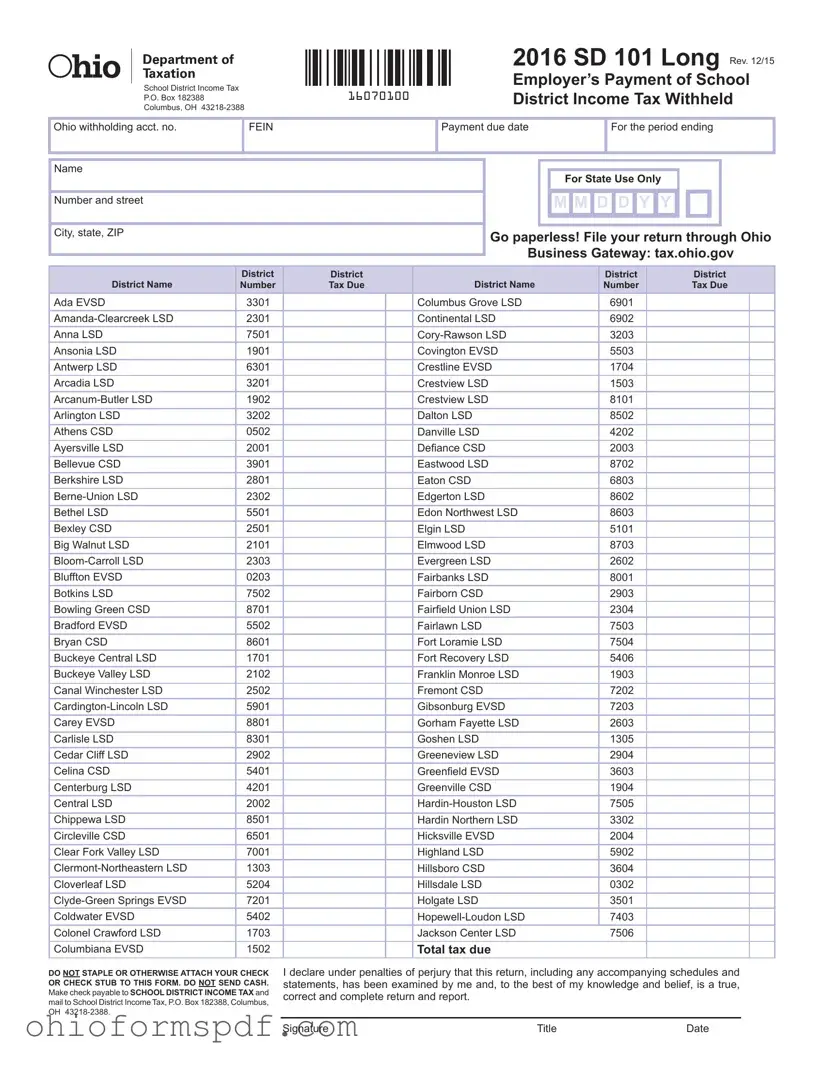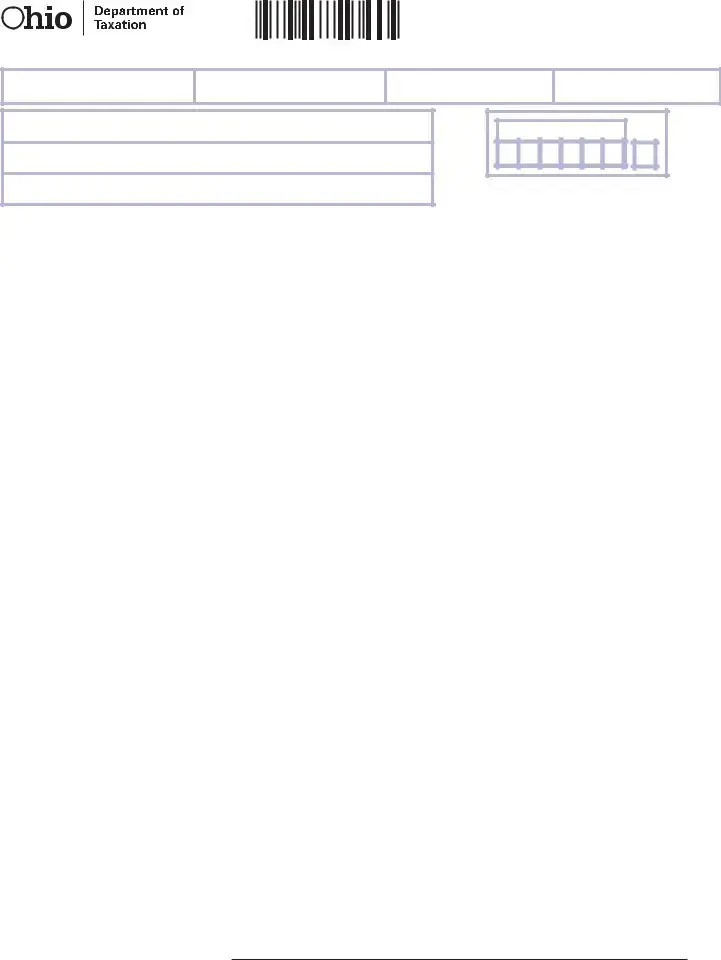The Ohio SD 101 form shares similarities with the Form 941, which is the Employer's Quarterly Federal Tax Return. Both documents are crucial for reporting taxes withheld from employees' wages. The SD 101 form specifically deals with the school district income tax withheld in Ohio, while Form 941 focuses on federal income tax, social security, and Medicare taxes. They are alike in that they both require employers to report tax withholdings and provide a breakdown of the tax due for a specific period.
Similar to the Ohio SD 101, the W-2 form, or Wage and Tax Statement, is essential for reporting an employee's annual wages and the amount of taxes withheld from their paycheck. While the W-2 form is sent directly to employees for their personal tax filings and to the Social Security Administration, the SD 101 form is submitted to the Ohio Department of Taxation. Both forms play a key role in tax compliance and ensure the accurate reporting of withheld taxes.
The State Unemployment Tax Act (SUTA) tax reporting form is another document sharing common ground with the Ohio SD 101 form. Both forms involve payments related to employment but focus on different areas: the SD 101 form addresses school district income tax withholdings, while SUTA focuses on unemployment tax contributions to the state. Employers are responsible for submitting both forms to the respective state authorities to fulfill legal tax obligations.
Ohio's IT 3 form, or Transmittal of Wage and Tax Statements, also parallels the Ohio SD 101 in functionality. This form is used to summarize and transmit employee W-2s and/or 1099s to the state tax department. Like the SD 101, the IT 3 form is part of the process of reporting taxes withheld from employees, albeit for different tax types and purposes. Each form ensures that the state receives accurate information on taxes withheld from wages.
The Employer's Annual Federal Unemployment (FUTA) Tax Return, or Form 940, resembles the Ohio SD 101 form in its purpose of reporting taxes related to employment. While Form 940 reports the employer’s annual federal unemployment tax liability, the SD 101 form focuses on school district income tax withholdings. Both documents are key to fulfilling federal and state tax obligations, respectively.
Form 1099, particularly the 1099-MISC, is often used to report payments to non-employees. This form has a similarity with the Ohio SD 101 in that both involve reporting financial information relevant to tax obligations. However, while the 1099-MISC focuses on miscellaneous income paid to individuals, the SD 101 form is focused on the school district income tax withheld from employees' wages.
The Quarterly Federal Excise Tax Return, or Form 720, is used to report and pay the federal excise taxes, presenting another parallel to the Ohio SD 101 form. Though they target different tax types—excise versus school district income tax—their role in tax collection and reporting within the framework of employment is crucial. Both forms require detailed record-keeping and adherence to deadlines to ensure compliance.
The Ohio Commercial Activity Tax (CAT) return, which businesses operating in Ohio must file, serves a purpose similar to that of the Ohio SD 101 in the broader context of tax reporting. While the CAT return deals with the tax on gross receipts for business conducted within the state, the SD 101 encompasses employee school district income tax withholdings. Each form contributes to the comprehensive tax landscape businesses must navigate.
Finally, the Form 1040, U.S. Individual Income Tax Return, shares the ultimate goal of tax reporting with the Ohio SD 101 form, albeit from the perspective of individual taxpayers rather than employers. While individuals use Form 1040 to report their annual income and calculate federal tax liability, the SD 101 form allows employers to report and pay withheld school district income taxes. Both are integral to the financing of government services and education.


